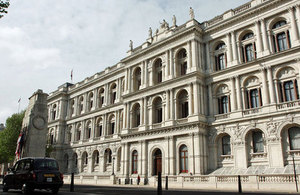Where did the SDLT holiday cost the government the most?

Research by the estate agent comparison site, GetAgent.co.uk, has uncovered how much money the UK government lost as a result of the stamp duty holiday holiday and where in England it was the most costly.
The SDLT holiday was introduced in July 2020, forming one part of the government’s package of interventions on England’s housing market, designed to ensure the market boomed, thus supporting an otherwise injured economy. It has gone on to have a profound effect on the market.
In the financial year 2019-20, before the holiday was introduced, there were 996,000 residential transactions in England. In the year 2020-21, while the holiday was in full swing, this increased marginally to one million transactions – a 0.4% uplift.
However, despite this increase, the amount of money the government collected through SDLT declined significantly as a result of the holiday.
In the year 2019-20, the government collected almost £8.4 billion through SDLT. In 2020-21, they collected just under £6 billion, a revenue loss of £2.4 billion (28.6%).
The biggest regional losses in percentage terms have been seen in the West Midlands (-42.5%), the East Midlands (-42.4%), and Yorkshire & Humber (-40.3%).
Despite seeing the smallest year on year decline at -20.5%, the government endured the largest monetary losses in London with a £675m year on year decline in the level of stamp duty paid.
Despite these government losses, a housing market boom has seen the overall value of England’s housing market increase in the last financial year. In 2019-20, the combined value of England’s homes was £297 billion. By the following year, this had increased by 13.3% to a total of £337 billion.
The largest increase was seen in the South East where the value of residential property increased by 20%, with the East (18.2%) and South West (16.9%) also experiencing above average growth.
Founder and CEO of GetAgent.co.uk, Colby Short, commented:
“The stamp duty holiday has done exactly what the government intended it to: it’s caused a surge in market activity, pushing up prices and propping up the economy during a very difficult and unpredictable time.
Of course, depending on what you class as success, the jury is still out. Not only has the government lost a considerable sum in tax, a loss we are sure to stomach via alternative tax increases somewhere down the line, but the cost of buying a home is now considerably higher than it was just a year ago.
All signs suggest they’re only going to climb further in the coming months as demand continues to outstrip supply. A fact that the government surely predicted given the numerous other demand focussed initiatives they’ve introduced with the same outcome.”





